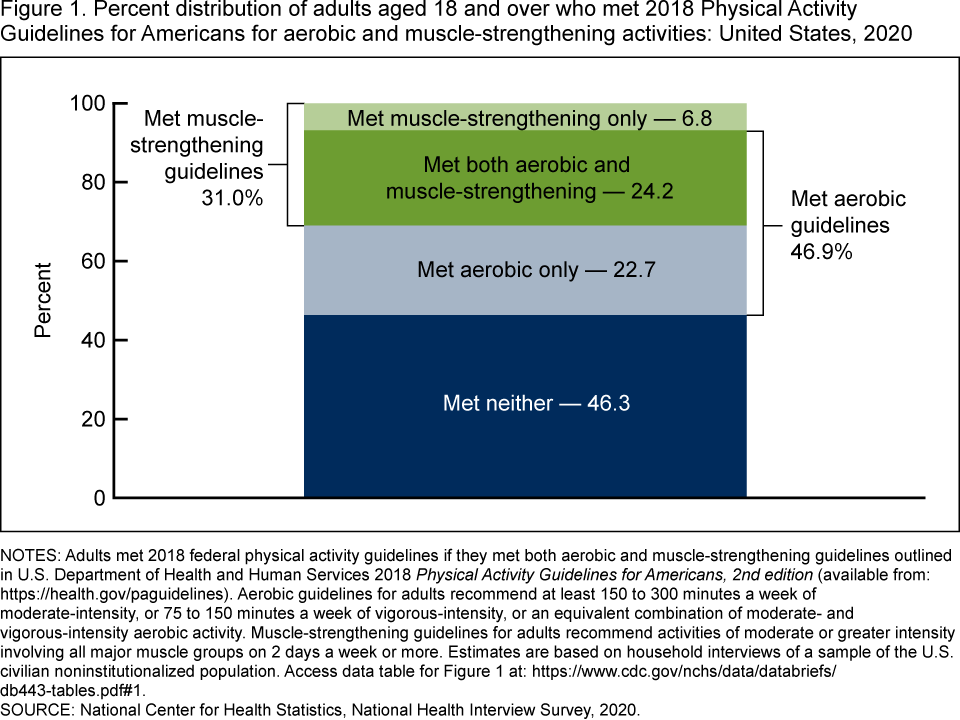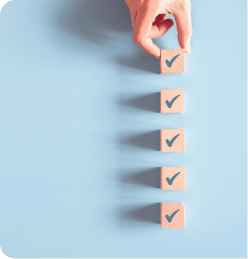That’s a great question! Next to improving our nutrition, starting an exercise program is one of the most effective ways to heal our bodies and also achieve better health outcomes.

The latest evidence-based recommendations from the National Physical Activity Guidelines for Americans are to get at least 150-300 minutes of moderate-intensity aerobic activity each week and strength training at least 2 days a week.
Regular exercise not only enhances physical fitness but also improves mental well-being. It helps maintain a healthy weight, reduces the risk of chronic diseases such as heart disease and type 2 diabetes, strengthens muscles and bones, and boosts overall energy levels. Moreover, exercise can enhance mood, reduce stress and promote better sleep. In essence, it’s a prescription for a healthier, happier life!
However, according to a 2020 study from the National Center for Health Statistics, over 75% of us aren’t even meeting the minimum recommendations. This information can all feel a bit overwhelming, especially for folks who aren’t close to the recommendations or have never participated in a workout routine before.
But there’s no need to be overwhelmed! You don’t need to be an athlete, you don’t even need money or special equipment. For most of us, honestly, it’s pretty simple! In this post I’ll talk about five steps to starting a simple exercise routine that will yield big results in the way you think and feel about exercise.
Wait, do I need to see a doctor before starting exercise?
The recommendation used to be to see a doctor before starting an exercise program, but that has changed. Doctors have realized that requiring people to make an appointment before starting to exercise was causing an unnecessary obstacle for most people. Even The American College of Sports Medicine has revised its guidelines to explicitly state that most people can exercise without visiting a doctor first.
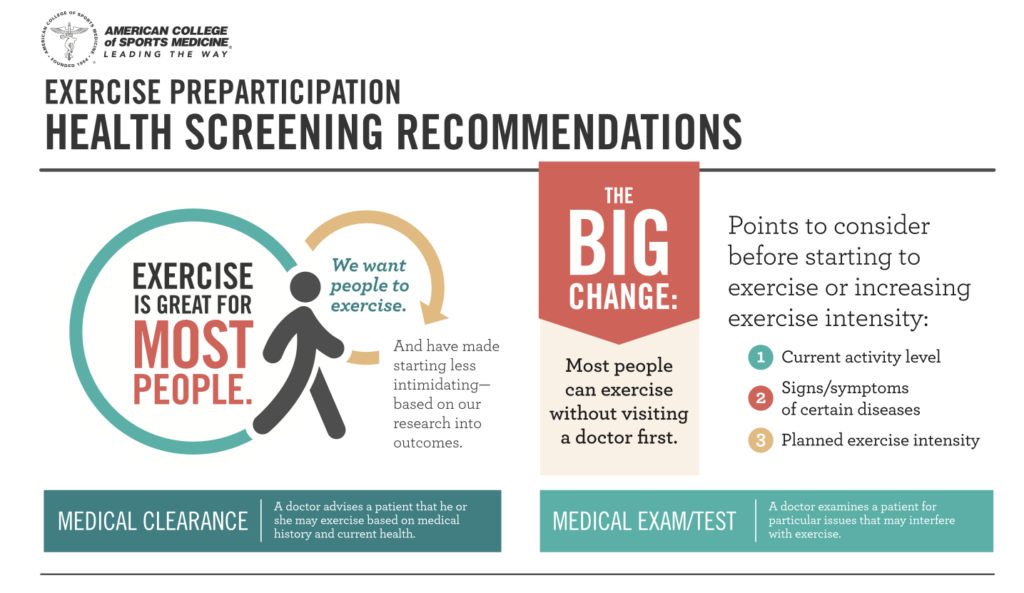
- If you don’t currently exercise but don’t have cardiovascular, metabolic or renal disease go ahead and get started in light to moderate exercise. Then work up to more vigorous activity over time.
- If you do currently have cardiovascular, metabolic or renal disease and are already exercising, then great! Keep it up!
- If you don’t currently exercise and have cardiovascular, metabolic or renal disease, or are experiencing signs or symptoms of these diseases, go ahead and make an appointment with your physician before starting exercise.
- If you are unsteady on your feet or experience dizzy spells from medication or are recovering from an injury or another diagnosis such as Parkinson’s Disease, it’s best to get clearance and direction from your physician who may direct you to a qualified physical therapist before starting exercise.
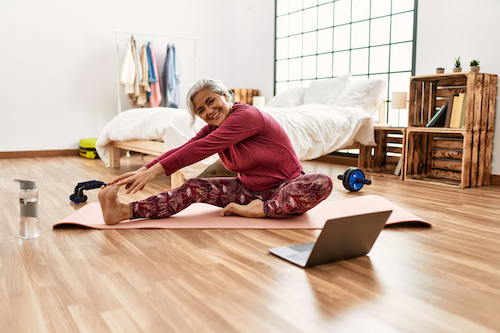
5 simple steps for starting an exercise program
- Start small
- Be consistent
- Master your mindset
- Know your “WHY”
- Take action!
Let’s take a look at how to put each of these steps into practice…
1. Start small
When you’re new to exercise, engaging in 150-300 minutes per week of moderate-intensity aerobic activity and two days of strength training may seem like a goal that’s just too big to tackle. That thought may be what’s keeping many of us from starting an exercise program. So let’s break it down.

What is moderate intensity aerobic activity?
Don’t let this phrase intimidate you. Moderate intensity aerobic activity just means to get your heart rate up! Some examples include walking at a brisk pace or dancing in the kitchen. Try starting to exercise with an activity that you have easy access to and that will also bring you enjoyment. You may wish to search “beginner workouts” on Google or whatever streaming service you use. Expert physical trainers put out tons of free content all the time!
Other forms of moderate intensity aerobic activity include:
- Bike riding
- Swimming
- Jumping rope
- Hiking
- Stair climbing
- Gardening
- Playing sports
What is strength training?
Strength training is a form of physical exercise that involves lifting weights or using resistance to build as well as strengthen muscles. Strength training can sound intimidating for many of us, but it’s not just for bodybuilders! And we don’t even need weights to get started. We can use body weight and resistance moves like pushups, squats, lunges or holding a plank position. There is no set time for strength training, just repeat the movement until it feels like it’s difficult to do another. You can work up to 2-3 sets of 8-10 repetitions as a general rule. Again, there is a ton of free content available online as well as on your streaming services.

Why start small?
Behavior change science tells us that starting with small attainable goals leads to the greatest success. Think about it. Failing at something we set out to do just doesn’t feel good. But achieving a goal feels great. That great feeling provides the motivation we need to fuel our drive.
How small can I start?
150 minutes of exercise is just a little over 20 minutes a day. So, 300 minutes a week is about 40 minutes a day. If that seems too much to start with, then start with the smallest increment you think you can realistically achieve. Even if it’s just 5 minutes of walking around the block at a brisk pace, or 1-2 pushups (on your knees or against a wall if you’re a beginner) is a good place to start.
You don’t have to do all the minutes at one time. A brisk 10-minute walk in the morning, and another in the afternoon will get you similar benefits as walking for 20 minutes in one session.
Each week you can add a little more until you get where you want to be. Research tells us that even a single bout of exercise lowers our blood pressure, improves insulin sensitivity, reduces anxiety, and improves cognition as well as sleep on that same day. That should be some strong motivation to get moving!
Pro tip: Whatever time you decide on to exercise, go ahead and put it on your calendar as an appointment with yourself. Setting an alarm or calendar reminder will encourage you to keep your commitment to yourself.
2. Be consistent when starting an exercise program
Research tells us that when starting new habits, consistency is key. Scheduling workouts at the same time each day gets your brain and body to start to expect the workout and you’ll soon find you’re resisting it less.
Plus, we get the best benefits of exercise when we spread out movement throughout the week. Spreading our activity out also reduces the risk of injury and muscle fatigue.
Here are some tips to help you get and stay consistent.
Know your obstacles.
Identify ahead of time what might get in the way of your success. Go ahead and make a list of all the things that might come up to derail your plan.
- My alarm doesn’t go off
- I oversleep
- It’s raining
- I get a cold
- One of the kids gets sick
- I don’t feel like it
- Something unexpected comes up at my scheduled workout time
Then, one by one, decide how you will handle each of these obstacles if they arise. For example,
- If I oversleep, I will reschedule my workout during my lunch break or after work
- If I get a cold, if it’s just a head cold I’ll walk at a low intensity. If I’m really sick, I’ll listen to my body and rest, getting back to my workout as soon as I’m recovered.
- If it’s raining and I don’t want to walk, I’ll do a video instead.
- If I don’t feel like it, I’ll remind myself of the benefits of exercise and do it anyway.
Plan for failure.
Know that you probably will miss a day, or even a few days. We have a tendency to overgeneralize and think to ourselves, “Oh well, I blew it. I can never stick to a routine.” This thinking leads to feeling defeated, which leads to us quitting our plan.
Instead, replace that thought with, “Well, I missed a day today, but I will get back to it tomorrow.” Success doesn’t need to mean that we carry out our plan 100% of the time. Success can mean, “I worked out more this week than I did before I started this journey.”
Engineer your environment.
If you plan to walk in the morning after you drink a cup of coffee, put your walking shoes right by the coffee maker to remind you to lace up and get going. Lay out your clothes the night before and put them where you brush your teeth so you get dressed in the gear that reminds you it’s time to work out. Charge your phone. I even know one woman who sleeps in her workout gear so she can roll out of bed and get to it before she talks herself out of it!
Within a few days or weeks benefits such as increased cardiorespiratory fitness, increased muscular strength, decreased depressive symptoms and sustained reduction in blood pressure can be measured. Consistent physical activity can also slow, delay or even reverse the progression of chronic diseases including hypertension and type 2 diabetes.

3. Master your mindset
Knowing what to do is only the first step. Putting your knowledge into action is the challenge. Experts call this disconnect between knowledge and action the “knowing-doing” gap. You can begin to close this gap by uncovering the thought patterns that have kept you from being able to make consistent changes in the past.
Capture your thoughts.
Take a few minutes to write down what you think about yourself and exercise. What do you notice? Some common thoughts of people just getting started include:
- I’m out of shape
- Exercise is hard
- I’m too old for this
- I have an injury that’s preventing me from being active
- Other people at the gym or on the video are in way better shape than I am
- I am embarrassed about the way I look compared to others
Behavior change science tells us that thoughts lead to action. The kinds of thoughts like the ones listed above tend to keep us stuck where we are. If we want to make some changes in our behaviors, we can start with making some changes in our thoughts.
| Thoughts That Keep Us Stuck | Thoughts That Move Us Towards Our Goal |
| I’m out of shape | I am getting in better and better shape each day |
| Exercise is hard | Hard work improves my muscle tone and makes me stronger |
| I’m too old for this | Exercise is important as I age so I can keep my strength and mobility for the things I love to do |
| I don’t have time | I make time for my health |
| These other people at the gym or on the video are in way better shape than I am | I am surrounding myself with people who work hard and are determined to remind me that I am working hard and am determined |
| I am embarrassed about the way I look compared to others | Everyone else is probably just as focused on themselves as I am focused on myself |
Do you see any of your current thinking patterns in the left hand column? If so, what thoughts from the right hand column can you replace them with? Replacing thoughts that hold you back from your goals with thoughts that drive you towards your goals can be the game changer you’ve been missing.
4. Know your “why”
What’s the reason you want to start exercising? Is it because someone is nagging you to do so? Is it because you want to hit a number on the scale? Or look a certain way in the mirror? These are extrinsic motivators, meaning they are reasons that come from outside of us.
Extrinsic motivators provide us with some encouragement, but intrinsic motivators, motivators that come from within ourselves, are even more powerful.
I bet you can find some even more powerful reasons, some intrinsic motivators, hiding within if you dig a little deeper. Start by asking yourself these questions.
- How will consistently exercising positively influence other areas of my life?
- What will I gain from improving my fitness?
- How will I feel when I am consistently exercising?
- Why is exercising regularly really important to me?
- What will exercising regularly allow me to do or experience that I am not currently able to do or experience?
As you answer these questions, maybe by writing them down, be sure to consider all areas of your life from your family and friends, to the work you do and your future goals.
What patterns do you notice in your responses? These will serve as your “WHY,” the intrinsic motivation that will drive you to keep going when things get hard.
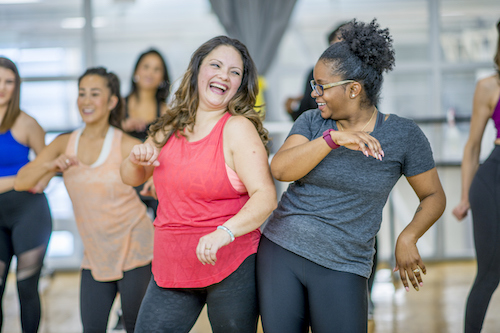
5. Take action
Goals are great, but setting goals alone won’t get us across the finish line. To do so we need to go beyond thinking in terms of goals to think in terms of action. For each goal, think of some actions that are:
- SPECIFIC What will you do?
- MEASURABLE When and for how long will you do it?
- ACHIEVABLE Remember, we want wins, so only set goals that you know you can likely achieve!
- RELEVANT Pick an action that will move you towards your goal.
- and TIME BOUND Set an end date. Start short term, like daily or weekly.
| Goals | Action |
| Start exercising | I will walk for 15 minutes each morning this week at 7 am Monday-Saturday. I will check out some videos online tonight right after dinner and download 2 to try next week. |
| Lose 15 pounds | I will add a vegetable to each meal this week. I will track my meals on Tuesday, Wednesday and Thursday of this week. I will walk for 15 minutes in the morning this week at 7 am and for 20 minutes each morning next week. |
Post your action steps somewhere visible as a reminder. Let your friends and family know what you’re doing. You may even find an accountability partner to make these changes with you or at least to offer you support and help hold you accountable for your actions.
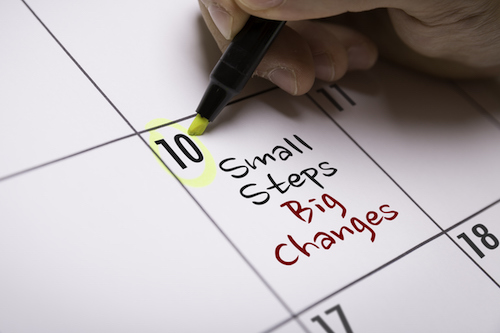
6. Support your body’s endurance and recovery
Supplements can play a vital role in enhancing exercise recovery and endurance. When you’re starting a new exercise routine, your body demands additional nutrients to repair muscles, manage inflammation, and maintain energy levels. A high-quality multivitamin is a great foundation, ensuring your body gets essential vitamins and minerals like magnesium, Vitamin D, and B vitamins, which support energy production, muscle function, and recovery.
For added benefits, consider targeted supplements:
- Electrolytes: Help maintain hydration and support muscle contractions.
- Joint health support: Reduce inflammation and promote joint health.
- Collagen: Aid muscle repair and growth.
Investing in a comprehensive multivitamin ensures your body has the nutrients it needs to thrive, giving you the stamina and resilience to stay consistent with your new fitness goals.
Embark on your fitness journey today!
Are you eager to start your journey toward a healthier, more active life? Fantastic! Taking the first steps into an exercise routine is one of the best decisions you can make for your well-being.
Remember, The National Physical Activity Guidelines for Americans recommend at least 150-300 minutes of moderate-intensity aerobic activity each week and strength training on at least two days. This isn’t just about physical fitness; it’s a path to mental well-being, weight management, and reduced risks of chronic diseases like heart disease and type 2 diabetes.
Don’t be overwhelmed by the numbers; it’s simpler than you think! Follow these five steps to begin your exercise routine effectively:
1. Start small: Begin with achievable goals. Even a short 5-minute walk or a couple of beginner-level pushups can kick-start your journey. Remember, consistency is key!
2. Be consistent: Schedule workouts at the same time each day to build a routine. Expect challenges, but plan ahead to overcome them.
3. Master your mindset: Recognize and replace negative thoughts with positive ones. Cultivate intrinsic motivation to fuel your progress.
4. Know your “WHY”: Dig deep to discover your personal, intrinsic reasons for exercising. Your “WHY” will be your driving force.
5. Take action: Set specific, measurable, achievable, relevant and time-bound (SMART) actions to reach your goals. Share your journey with others for support and accountability.
You don’t have to go it alone. A qualified personal trainer can help make sure you’re doing exercises properly as you are starting out. This expertise can be especially welcome to someone as they are just starting out with strength training, as well as to folks who want some further motivation and encouragement to take their training to the next level. Many trainers specialize in working with different populations such as older adults, teens or athletes.
To look for a qualified professional, look for a trainer who is certified with the American College of Sports Medicine (ACSM) or the American Council on Exercise (ACE). The National Academy of Sports Medicine (NASM), National Council on Strength and Fitness (NCSF) and the National Strength and Conditioning Association (NSCA) also offer reputable certifying programs of study for personal trainers.
Now that you have a roadmap, take action and embark on this empowering journey to a healthier, happier you! Your future self will thank you for it.
References and further reading
https://health.gov/sites/default/files/2019-09/Physical_Activity_Guidelines_2nd_edition.pdf
https://health.gov/sites/default/files/2019-10/PAG_ExecutiveSummary.pdf
https://www.cdc.gov/nchs/products/databriefs/db443.htm#section_1
Elgaddal N, Kramarow EA, Reuben C. Physical activity among adults aged 18 and over: United States, 2020. NCHS Data Brief, no 443. Hyattsville, MD: National Center for Health Statistics. 2022. DOI: https://dx.doi.org/10.15620/cdc:120213
van der Weiden A, Benjamins J, Gillebaart M, Ybema JF, de Ridder D. How to Form Good Habits? A Longitudinal Field Study on the Role of Self-Control in Habit Formation. Front Psychol. 2020 Mar 27;11:560. doi: 10.3389/fpsyg.2020.00560. PMID: 32292376; PMCID: PMC7135855.
